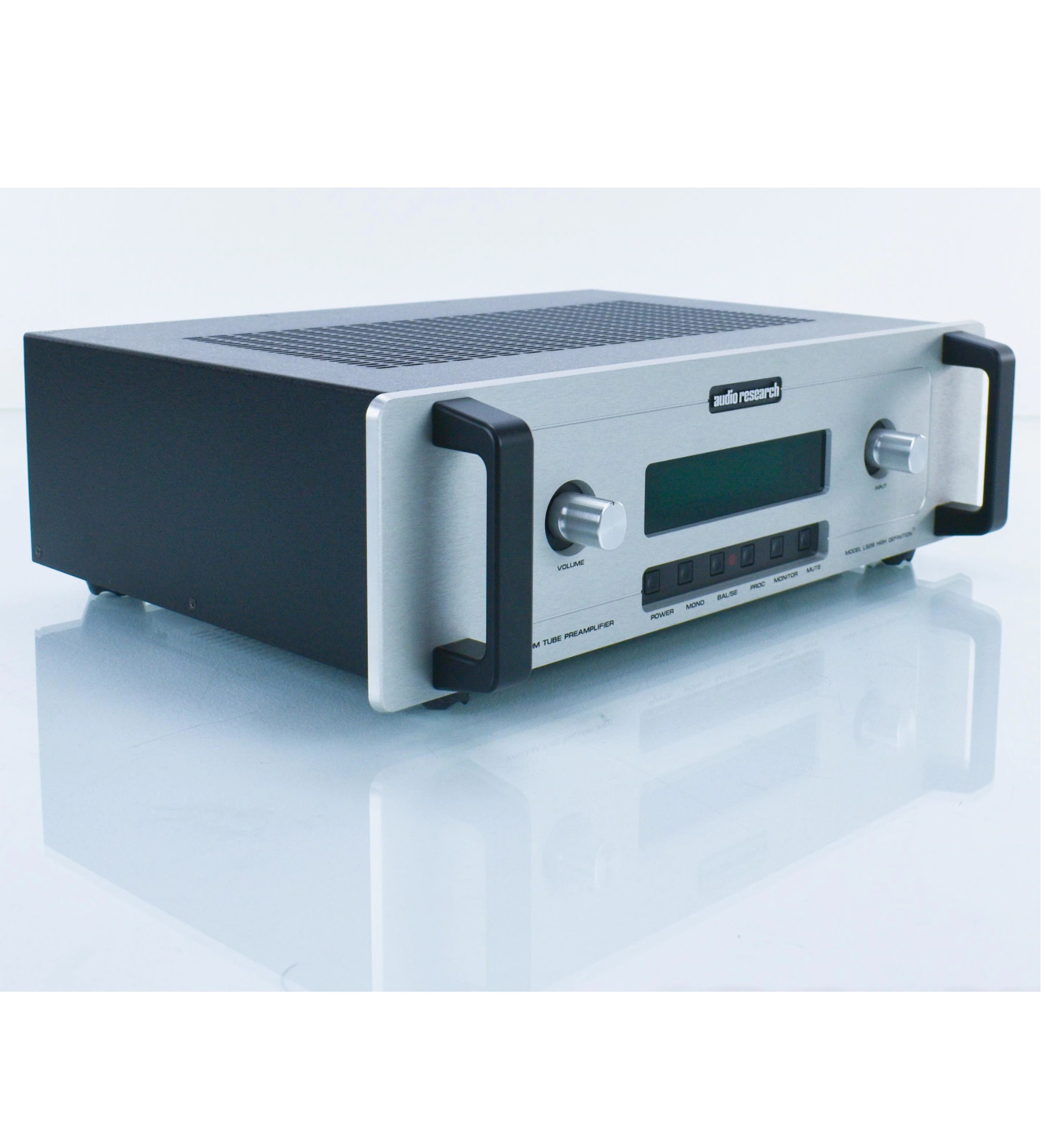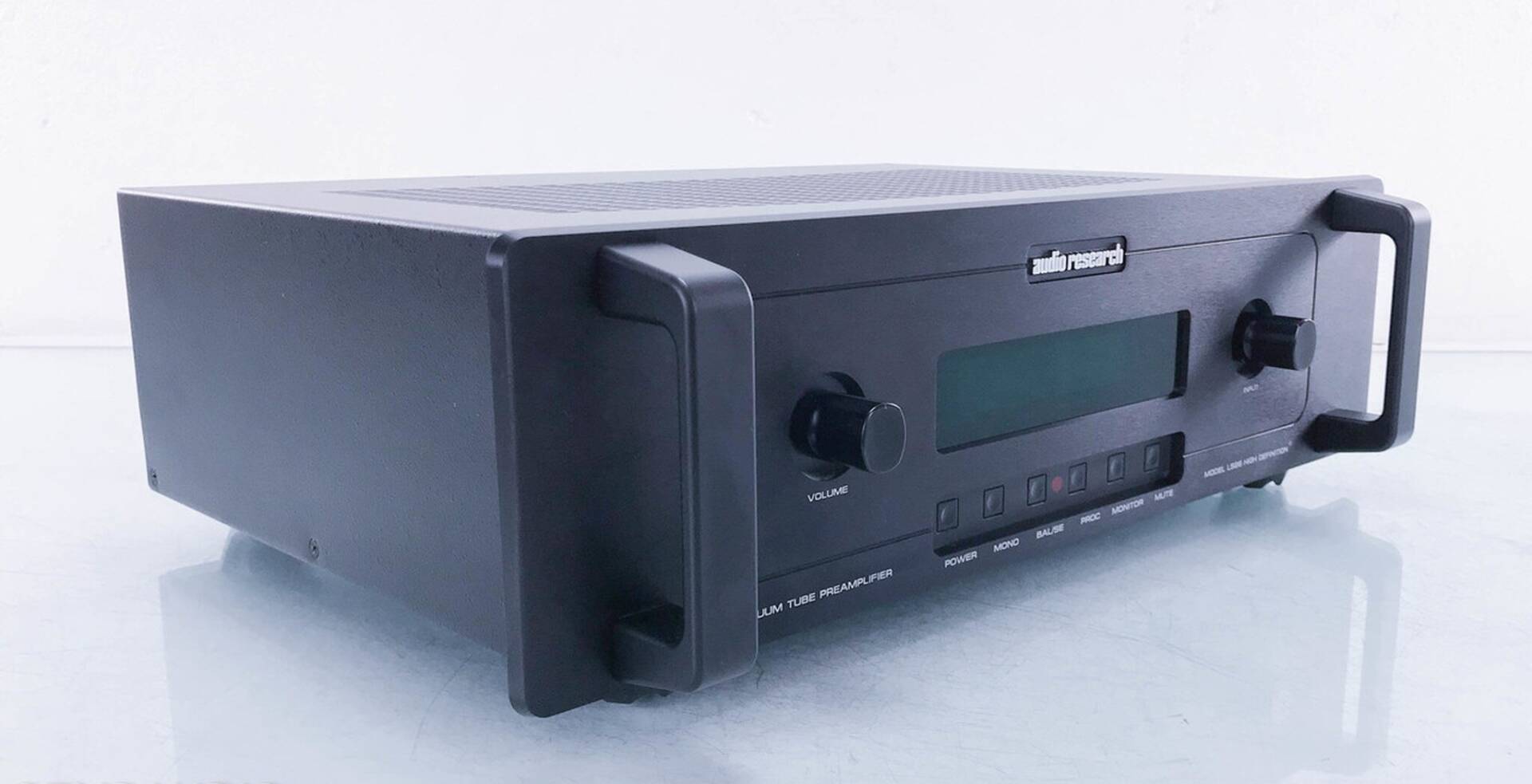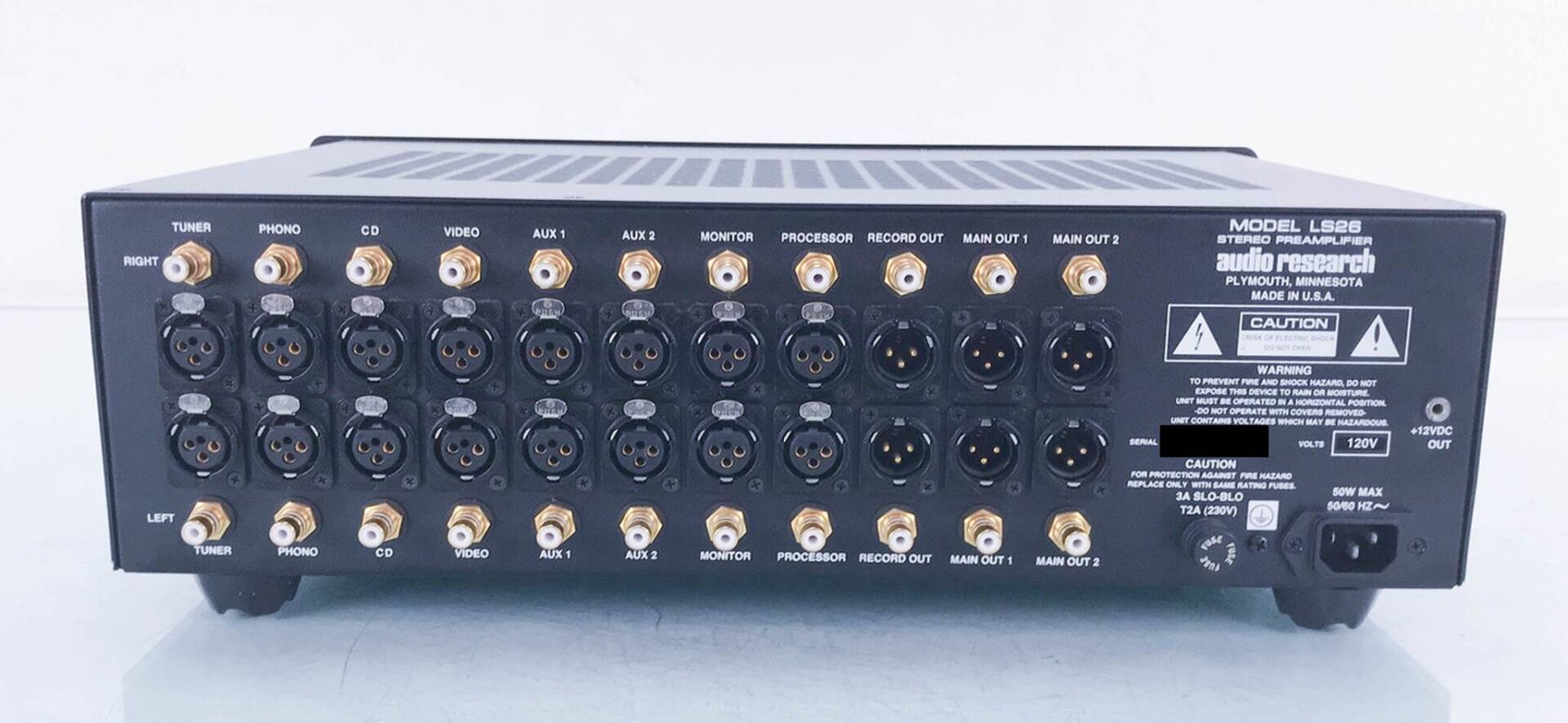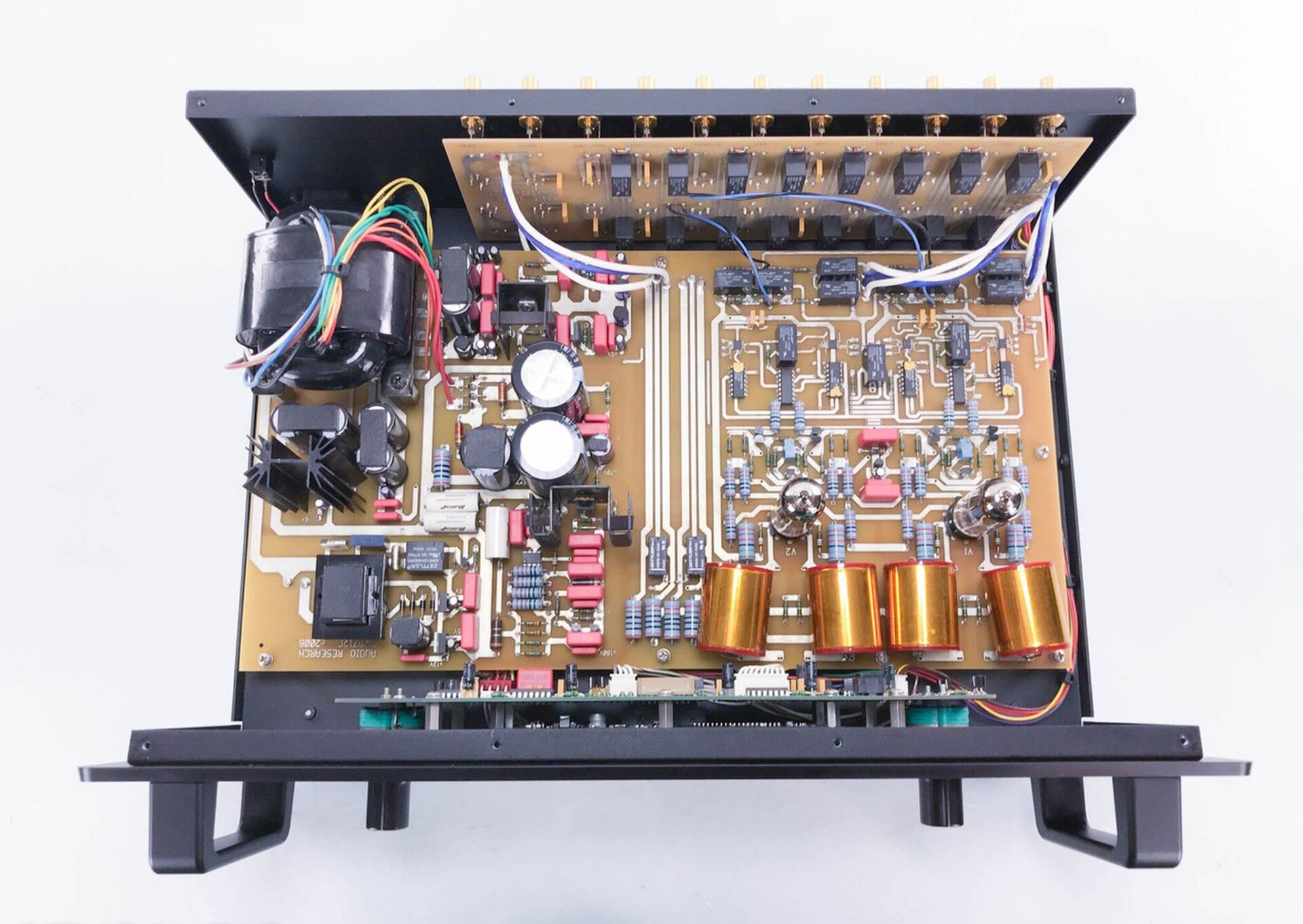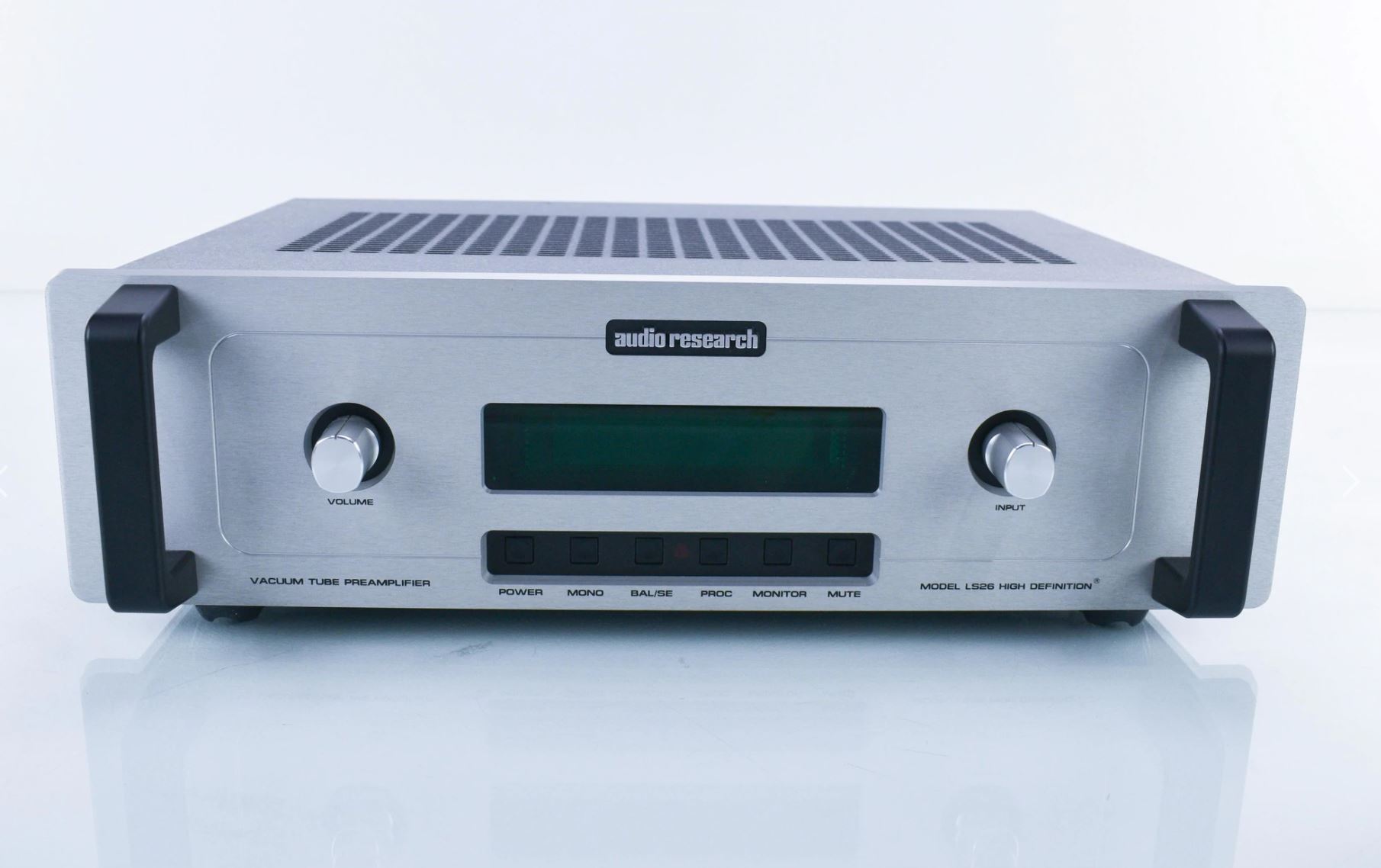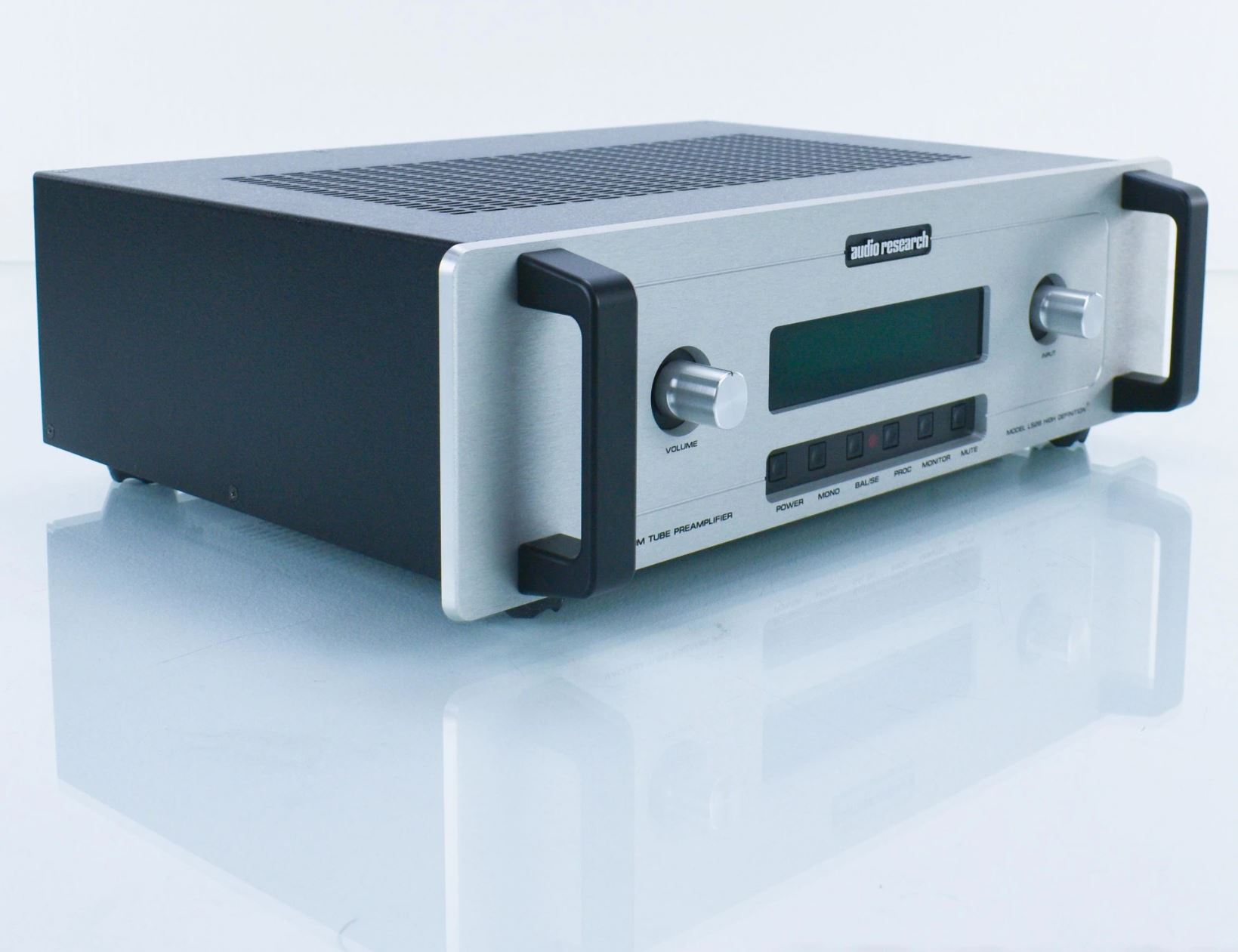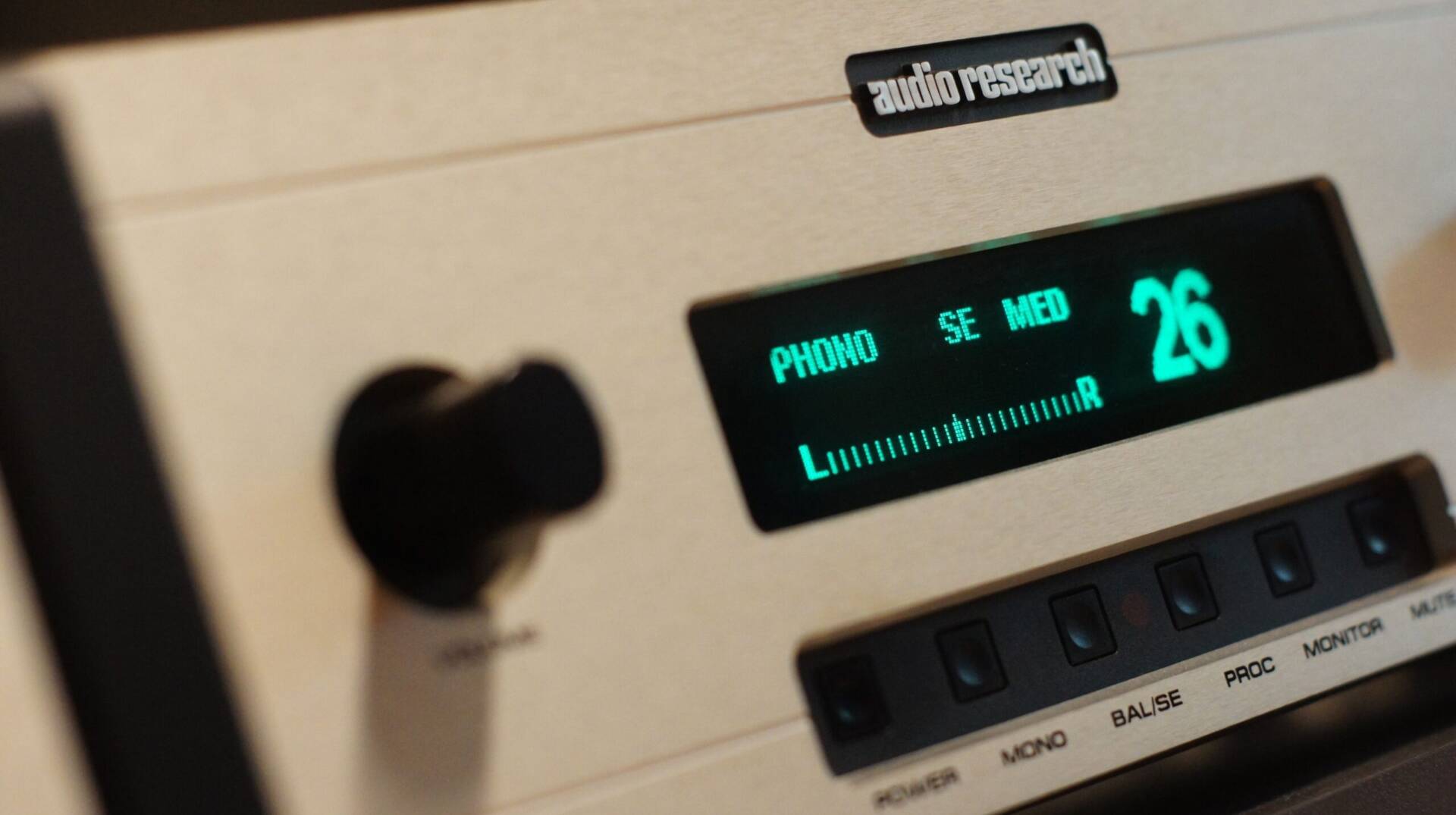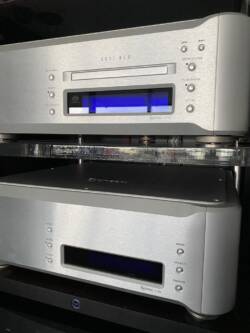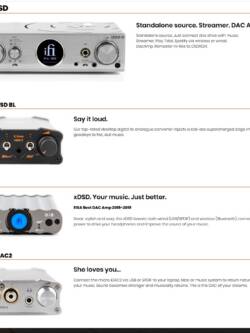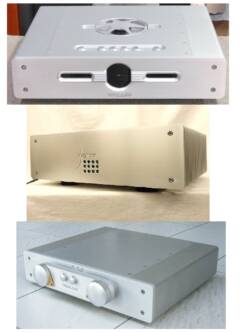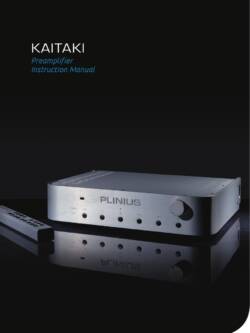Audio Research LS26 Preamplifier (Silver)
Original price was: R134,000.00.R35,000.00Current price is: R35,000.00.
Description
The whole is greater than the sum of the parts

The LS26’s open, detailed, dynamic sound drew me into the music, demanding my full attention. Often when I’d put on a CD for casual listening and try to do some reading, I’d put down my book so I could devote my full attention to the music. Yet the LS26’s presentation was very relaxed and spontaneous, with music flowing naturally out of the system and beguiling me with its great charm. Audio Research has somehow managed to combine two often diametrically opposed goals into a single chassis: The LS26 does all the traditional audiophile things spectacularly well, while at the same time producing music that is both relaxing and involving.
Although Audio Research believes the balanced connections sound a bit better than the unbalanced (as do I), you shouldn’t rule out using the LS26 with an unbalanced amplifier or source. But if you have a balanced amplifier, the LS26 will probably extract its best sound connected balanced.
When a component combines as many excellent performance traits as the LS26, it’s hard not to gush over it. And in spite of my best attempts to remain objective, it’s likely you’ve sensed my great enthusiasm. Although $5995 is not pocket change, the LS26 is one of the best preamps I’ve heard at any price, and I am certain it will compete with pricier models from other makers, both of which make it an easy pick as a Reviewers’ Choice.

High Points
• The Audio Research LS26 is very well constructed and utterly noise-free in operation.
• It is very simple to operate and provides the user ultimate convenience with a well-designed remote, as all preamp functions can be controlled with it.
• It is simple to integrate into any existing or planned system, providing single-ended as well as balanced XLR inputs and outputs, and includes a processor pass-through circuit for home theater applications.
• Sonically, it does all the same things that make the Ref3 one of the top preamps, only on a slightly reduced scale. Its sound is smooth and open, dynamic and musical.
Low Points
• Like the Reference 3, the LS26 takes several hundred hours of break-in before it sounds its best.
• As with any tube product, there is inherit maintenance required when the tubes eventually wear out. That is part of the appeal of a tube preamp. However, there is cost and effort involved that you will never deal with in the world of solid state, high-end audiophile preamps.

Conclusion
The LS26 is a fantastic preamp that does everything right. It’s simple to use, built like a tank, and sounds terrific. Think of it as a Ref3 with a large discount. Yes, the Ref3 is better, but unless you have the absolute best of the best components, cabling, power, room treatments, etc., it may be overkill. Nearly all enthusiasts will be blown away by the LS26, which will keep them happy for a very long time. More than likely, this will be the last component that will need to be upgraded.
The $6500 Audio Research LS26 vacuum tube preamplifier has very low noise, which we have come to expect with modern vacuum tube components. Triangles and bells ring for a very long time before fading into silence. However, as they fade, these delicate harmonic overtones lose body and their quality becomes lighter and thinner, which is not true to the source signal. The upper treble is very extended and even, with no highlighting of a particular frequency range. Even so, very high frequency sounds become splashy and cymbals often sound like white noise instead of disks of shimmering metal.
Voices are markedly thinner and with less body than when the preamplifier is bypassed. The reduces the sense of the singer having a physical presence in the room and removes the listener from the original performance venue and space, like listening to the performance on very good small monitors instead of being in the room with the artists. This relatively depressed or recessed midrange, which typifies the ARC house sound (although largely absent in the LS22), accentuates the upper midrange and lower treble creating a false feeling of presence and detail. A good example of the change of character that results from this aberration is when listening to the wood sticks on Dire Straits “Water of Love”. Through the LS26, these sound more like chopsticks.
Spatially, the LS26 has very good 3-D effect with excellent left-to-right placement of musicians. The sound stage is also very deep, although the stage narrows towards the rear creating a somewhat triangular or rounded rear of the stage.
